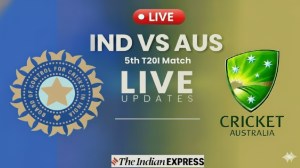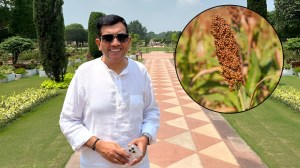Building cities,photo by photo
Rome wasnt built in a day,but in cyberspace it might be,as computer science researchers develop a participatory system to create 3D renderings of urban structures....
Computer science researchers at the University of Washington and Cornell University are deploying a system that can create three-dimensional renderings of buildings,neighbourhoods and potentially even entire cities.
The new system,PhotoCity,grew from the original work of a Cornell computer scientist,Noah Snavely,who while working on his Ph.D. dissertation at the University of Washington,developed a set of algorithms that generated 3-D models from unstructured collections of 2-D photos. The original project was dubbed Photo Tourism and it commercialised as Microsofts Photosynth service,making it possible for users to upload collections of photos that can then be viewed in a quasi 3-D montage with a Web browser.
Photosynth collections are generally limited to dozens or hundreds of photos. The researchers wanted to scale their technology to handle tens of thousands or even millions of photos. They also wanted to use computer processing power to transform the photos into true 3-D images,or what they call a dense point cloud. The visualisation technology is already able to quickly process large collections of digital photos of an object,such as a building,and render ghostly and evocative 3-D images. To do this,they use a three-stage set of algorithms that begins by creating a sparse point cloud with a batch of photos,renders it as a denser image,capturing much of the original surface texture of the object,and then renders it in 3-D.
To improve the quality of their rendering capabilities,the researchers plan to integrate their computing system with a social game that will permit competing teams to add images where they are most needed to improve the quality of the visual models. The PhotoCity game is already being played by teams of students at the University of Washington and Cornell,and the researchers plan to open it to the public in an effort to collect 3-D renderings in cities like New York and San Francisco. Contestants will be able to use either an iPhone application that uses the phones camera,or upload collections of digital images.
A collaborative system has great promise for harnessing the creative abilities of people in tandem with networked computers,said Peter Lee,a Defense Advanced Research Projects Agency programme manager who recently organised a team-based contest to use the Internet to quickly locate a series of red balloons hidden around the US. The obvious thing to do is to try to mobilise a lot of people and get them to go out and take snapshots that contribute to this 3-D reconstruction, he said. But maybe if enough people are involved someone will come up with a better idea of how to go about doing this.
On photocitygame.com,anyone who wants to be a custodian of a particular place can begin by uploading pictures of the site. One of the nice things for the players is they can own the points they create, said Kathleen Tuite,a University of Washington graduate student and a computer graphics researcher who is one of the designers of PhotoCity. She said the researchers were considering the idea of offering real world prizes that would create incentives similar to Geocaching,the popular Internet GPS game.



- 01
- 02
- 03
- 04
- 05



























